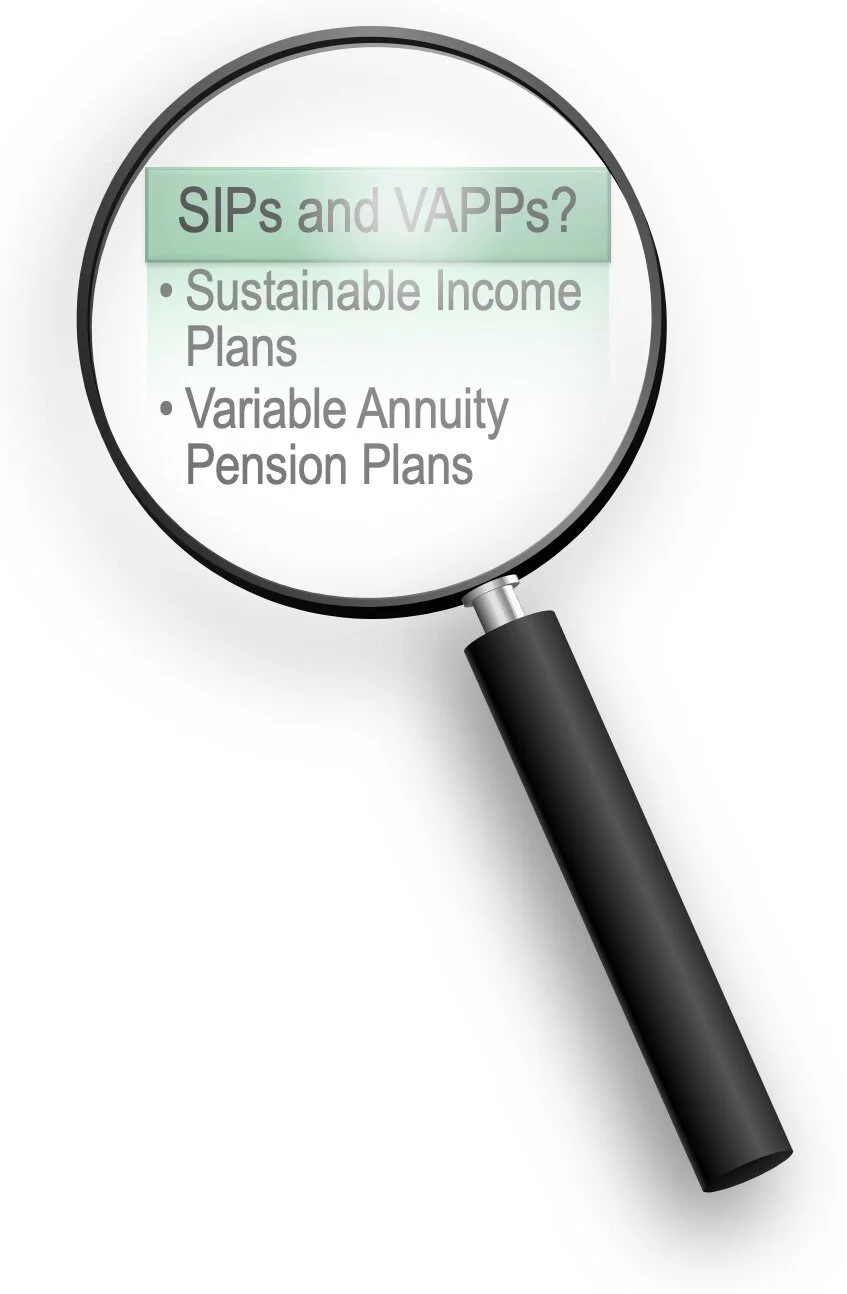SIPs and VAPPs are Hot! But What are They Anyway?
Variable Annuity Pension Plans (VAPPs) and Sustainable Income Plans (SIPs) are gaining significant traction in the Multiemployer pension space and this article helps explain why.
A traditional pension plan has many great features, two of which are:
Professional asset management which has led to a history of favorable asset returns when compared to participant directed plans/accounts.
The pooling of longevity “risks” which allows the plans to cost effectively guarantee lifetime income when compared to what an insurance company would charge an individual.
However, a concern has long been the volatile year to year cost fluctuations to fund the promised benefits.
For background, a traditional pension plan, or more commonly a Defined Benefit Plan, as that name indicates, defines the benefit. The total cost to fund this benefit will depend on several factors, including earnings on the assets set aside. Good earnings will lower the future costs while bad earnings raise them.
Under a Defined Contribution Plan (401(k), for example), it is somewhat the reverse.
Both Variable Annuity Pension Plans (VAPPs) and Sustainable Income Plans (SIPs) try and move a traditional DB plan closer to this second approach while retaining the two key features noted above around earnings and longevity.
Under both designs, the pooled assets are professionally managed, and the retirement income is guaranteed for life. However, the key difference is that the value of the benefit will vary based on the plan’s actual earnings each year. Below is an example:
Using the example above and a negative 5% return, the resulting adjustment would be .95/1.05 with an adjusted benefit of $1,900 as of December 31, 2021.
Clearly, an “aggressive” investment strategy will result in significant benefit changes (up or down). A Sustainable Income Plan tries to mute this by building a buffer/reserve during strong years in order to dampen the negative adjustments from bad years. Continuing the example above, and a return of 17%, the plan may, for example, use 9% of the 17% and reserve 8%. The benefit would then be adjusted by 1.09/1.05 for a benefit of $2,180 as of December 31, 2021. In addition, the extra return of 8% would be “stored” for a future year of potentially poor returns.
VAPPs and SIPs have some positive features to them versus either a traditional Defined Benefit plan or Defined Contribution plan. However, it is important to keep a few things in mind:
Retirees and beneficiaries already receiving retirement payments are subject to the annual adjustments. During good years, this can help fight inflation if there’s no Cost of Living adjustments tied to the benefit. However, during bad years, this could result in a reduction in their monthly benefits.
Typically, the design is only applied to new benefits and therefore, any prior underfunding will remain and must still be managed/addressed.
Funding costs can still vary year by year (up or down) due to other plan experience, such as mortality, turnover, disability, etc.
In last quarter’s newsletter, we provided some good news from “Thole versus US Bank” where the U.S. Supreme Court ruled that participants in a traditional pension plan could not establish standing under U.S. law if their benefits were not impacted. However, under a VAPP and SIP, benefits will be impacted by all investment decisions made by the plan’s trustees and other fiduciaries.
Under both a traditional pension plan and a VAPP/SIP, the dollars available to pay benefits still follow the fundamental rule that; contributions plus earnings pays for expenses and benefits. Therefore, a VAPP/SIP will only provide better benefits for the same amount of contributions if either the earnings increase, or the expenses are reduced.
Both a Variable Annuity Pension Plan and a Sustainable Income Plan present very interesting alternatives to a traditional defined benefit plan making them well worth giving consideration. If you have any questions, we suggest reaching out to your actuary and/or fund counsel for more information. Of course, we at Zenith American Solutions are also available to help in any way we can.




